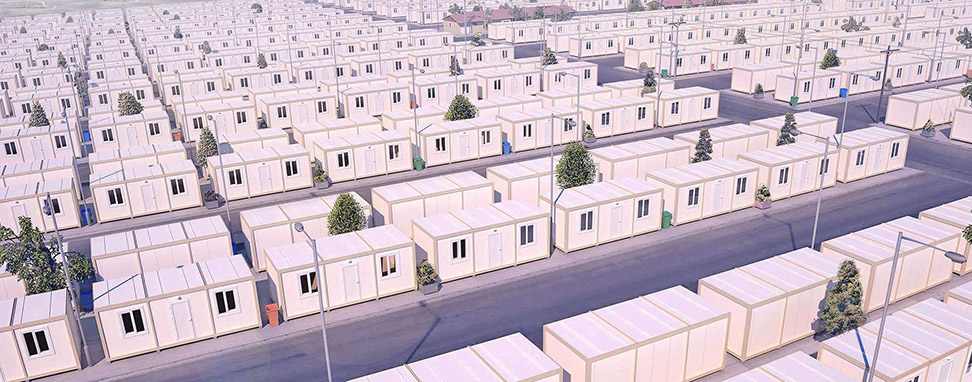Rust and Corrosion: Metal containers are susceptible to rust and corrosion, especially in humid or coastal environments. Regular inspection and treatment of any rust spots are essential to prevent structural damage. This maintenance aspect is distinct from traditional homes, which typically do not have the same level of susceptibility to rust.

Sealing and Insulation: Proper sealing and insulation are crucial for container houses to maintain comfortable indoor temperatures. Over time, seals and insulation materials may degrade or shift, requiring periodic checks and repairs to ensure energy efficiency and interior comfort. Traditional homes usually have more standard insulation methods that might have different maintenance requirements.
Exterior Finishes: The exterior of a container house, including any paint or protective coatings, may require maintenance and touch-ups more frequently than the exterior of a traditional home. Exposure to the elements can cause paint to peel or fade, and addressing these issues promptly can help prevent further deterioration.
Condensation and Moisture Control: Metal containers can be prone to condensation buildup due to temperature differentials between the interior and exterior. This can lead to moisture-related problems, such as mold growth and water damage. Regular ventilation and moisture control measures may be needed to prevent these issues, which might not be as prevalent in traditional homes.
Fasteners and Joinery: Container houses often involve welding, cutting, and modifying the metal structure. Over time, the integrity of these modifications and any fasteners used could be compromised. Inspecting and reinforcing these areas may be necessary to ensure the structural integrity of the house.
Pest Control: While pests can be a concern for any type of home, container houses might have unique vulnerabilities, such as gaps or openings around modifications, that could allow pests to enter. Regular pest control measures may be required to prevent infestations.
Foundation and Settling: Container houses might be built on various types of foundations, including concrete piers or slabs. Monitoring the foundation for settling or shifting is important to prevent structural issues over time.
Utilities and Infrastructure: Container houses may have unconventional utility installations that require specific maintenance considerations. Plumbing and electrical systems might be exposed or integrated differently compared to traditional homes.
Roof and Water Drainage: Container houses often have a flat roof design, which can require specific maintenance to ensure proper water drainage and prevent water pooling. Traditional homes typically have sloped roofs that naturally facilitate water runoff.
Unique Components: Container houses might incorporate unconventional components such as shipping container doors, windows, and cargo-related hardware. These components may have different maintenance needs compared to standard residential fixtures.








